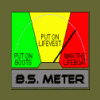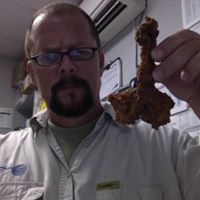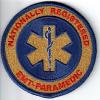-
Posts
842 -
Joined
-
Last visited
-
Days Won
25
Bieber last won the day on May 26 2013
Bieber had the most liked content!
About Bieber
- Birthday 08/27/1986
Previous Fields
-
Occupation
AAS, Paramedic
Profile Information
-
Gender
Male
-
Location
The Midwest
Bieber's Achievements
Newbie (1/14)
175
Reputation
-
Old topic, but one we're still struggling to fix. Anybody have any experience with cot quilts? (https://www.boundtree.com/cot-quilts-group-9844-177.aspx) Easy to clean? Warm for the patient?
-
We must be lagging here in regards to this new mandatory BSN stuff because jobs for ADN's are still a plenty around here. Although I did hear that it would be harder to advance without a BSN now.
-
A mixed system with EMS-based BLS first response along with BLS (EMT/EMT) and ALS (paramedic/AEMT) ambulances as well as Community/Advanced Practice Paramedics and supervisors in fly cars dispatched as requested by providers on scene or according to call type: Omega: first response only Alpha/Bravo: first response + BLS ambulance Charlie: first response + ALS ambulance Delta/Echo: first response, ALS ambulance, C/APP C/APP's do Community Paramedic work between emergency calls, ALS ambulances hand over care to BLS units if the patient doesn't require ALS capabilities. Also have some trucks dedicated to BLS/"light" ALS transfers (AEMT/EMT), as well as some critical care capabilities (CCP x2 + EMT) for critical care inter-facility transfers. Have an ALS:BLS ratio of about 4:10, target highly educated, highly trained paramedics and put them through an intense "on boarding" academy. Six months probationary period under an experienced paramedic. For vehicles, my picks would be: Chevrolet Suburban for BLS first response and C/APP's Type II Sprinter for BLS and ALS ambulances Type III Sprinter for critical care ambulances All hi-vis yellow with green battenburg patterns. Blue lights. No bench seats, all should have forward-facing chairs instead with a "stand" in front with drawers and a monitor mount; keep the radio and the bulk of vital equipment on the provider side to avoid providers having to get up during transport. Scrub tops (durable with a radio mic clip sewed on the front), EMS pants. No patches, just agency logo over left breast and name/cert over right. Make the uniforms ANSI compliant (a safety vest you can't forget to put on). Alpha/bravo/charlie responses, no lights and sirens. Delta/echo, lights and sirens as deemed safe to do so by crew. Lights and sirens transport by clinical supervisor order only. Entry level payscale EMT: $34,000 AEMT: $38,000 Paramedic: $45,000 C/APP/Supervisor: $50,000 Requirements EMT: Valid certification. 3 month academy + 3 months probation/field training AEMT: Valid certification. 3 month academy + 3 months probation/field training Paramedic: Associate's degree minimum. 3 months academy + 6 months probation/field training. C/APP/Critical-Care Paramedic: Bachelor's degree minimum and/or Associates + CP/CCP certification and/or Medic + RN. 3 months academy + 6 months probation/field training. Supervisor: C/APP equivalent or relevant management/administrative education. Capabilities EMT: Same as state regs. AEMT: Same as state regs. Paramedic: Supraglottic airways only. C/APP: ETI, (maybe) RSI, wound care (simple sutures), port/cath maintenance, limited dispensing, etc. CCP: Vent management, IV drips, IABP monitoring/management, etc. On-boarding academy be a mix of online and in person lectures as well as skills lab and would include: Medical foundations (bio/A&P/patho review for both BLS and ALS) Pharmacology review (not just EMS meds) Protocol/guidelines Operational guidelines and policies Equipment familiarization EMS defensive tactics (something like DT4EMS, not guns and tasers and all that stuff) EMT's and AEMT's operate under protocols or paramedic direction. Paramedics and up operate under guidelines with options for alternative care pathways available to them. C/APP follow-ups for high-risk refusals or patients targeted as "at-risk" by call review or internal/external providers. 12-hour shifts rotating between busy and slow stations every month. An X-box and a copy of the original Star Wars trilogy in every station.
-

Cardiac Arrest, Hypothermia, and Resuscitation Science course
Bieber replied to Just Plain Ruff's topic in Patient Care
I joined up! -
I think our perspectives are going to differ on this mostly because we already have to take most of the same pre-reqs (including A&P) to get your medic here; I would agree for places without a degree requirement for medics that having those pre-reqs is appropriate and vital to bridging. Like you said, anecdote is anecdote. Still, it's interesting for me to hear opinions on medic to RN programs and experiences from people in other parts of the country because everyone I've ever spoken to here who has gotten their RN has basically the complete opposite opinion of it in terms of difficulty, educational value, etc regardless of whether it was the bridge format or traditional route.
-
What's wrong with the bridge program? I mean, we don't really think that a medic needs to start from scratch with an RN program, do we?
-
Yeah, what Mike said: the IAFF is terrible for EMS as is the fire service in general. Fire has no more place in the business than a dual-role plumber/RN. Oh, and I don't have anything specific against unions, just the IAFF.
-
Around here the bridge program is a year long with online didactic along with clinical hours.
-
I agree with you 100%. Artickat, you're right about that. Artickat, you're right and we as an industry need to try to advance ourselves. I will say that I do think that the bridge program is appropriate here, in my location, in my personal opinion. I don't see any problem with it as far as competency goes.
-
I would like to see that happen as well. At the same time, my perspective isn't the same as others and when you can easily bridge over to RN and make more money with fewer of the problems you experience working EMS, it's a tempting offer that has lured away from us a significant number of competent paramedics.
-
Low wages, high stress level, and uncertain or erratic schedules make traditional schooling difficult to commit to as well as to pay for.
-
I'm planning on doing the medic to RN bridge through one of the colleges here that does it in an online format. A lot of the medics around here have gone through it, though their opinions of the RN program have been mostly negative. A lot of them work PRN at the hospitals now, and actually the ER's seem to prefer Medic/RN's. Addendum: Just for clarification, the complaints with the RN program have been more with the RN education in general, not the bridge specifically. Medic/RN's around here don't have a lot of positive things to say about RN school regardless of the format (traditional or bridge).
-
This. Unless you have another reason to think that the patient is normally violent, he was most likely post-ictal. Restrain him and let him come around and then attempt communication.
-
Dangerous? That may be a little too much. Depending on the system it could work just fine. Patience, I think one way of finding the balance between achieving your goal without stepping on any toes is to simply let your partner know what you need done, and then allow them to figure out the best way (for them) to meet that goal. When I'm working with someone new, I just try to ask a lot of questions about their own current experience, what they've done, what they haven't done, how it worked for them and share my own experiences using my own approach to similar problems. Without some more specific examples of where your frustration is, I can't get you much more specific advise.
-

Probably asked before - private EMT kit off duty?
Bieber replied to MarkusEMS's topic in Equiqment and Apparatus
The only thing I keep in my first aid kit is a cell phone. That way whenever I see an urban outdoorsman napping on the side of the road I can tell myself "I'd better call it in, just in case". I try to only do this when I'm already late for an appointment however, that way I can justify not stopping to investigate myself.










